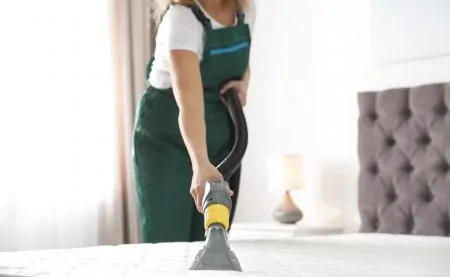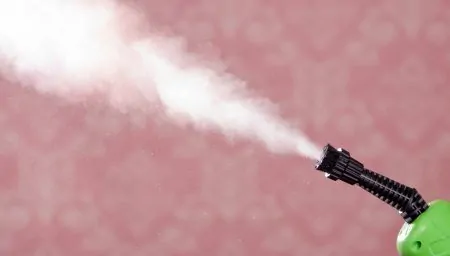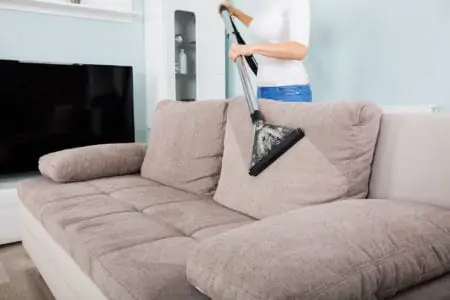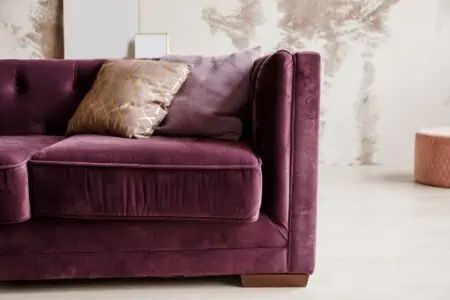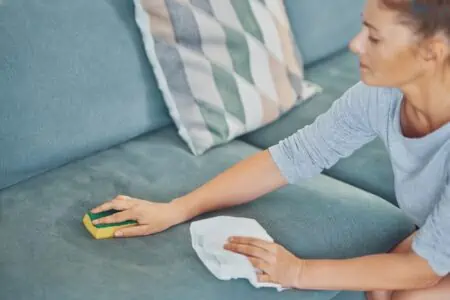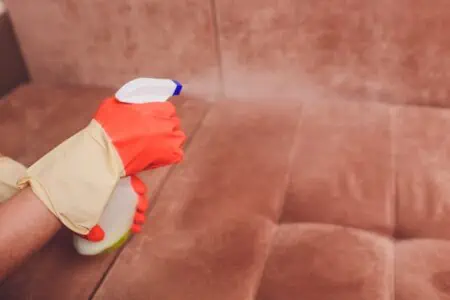After we buy a new mattress, we do our best to keep it looking clean and fresh smelling. However, as time passes, there might be a few unlucky accidents or spills, causing stains.
Leaving your mattress dirty can cause dead skin cells to build up, attracting dust mites. Mold may also begin to grow in such situations.
Cleaning a mattress isn’t easy since you can’t use much water, or you’ll risk ruining it. That’s why steam cleaning is an excellent way to deep clean without over-saturating the mattress.
Key Takeaways
- Steam cleaning is an effective way to deep clean your mattress without over-saturating it, killing bacteria, dust mites, and bed bugs.
- Vacuum the mattress thoroughly before steam cleaning to remove dust, debris, and dirt.
- Use a steam cleaner that heats the steam to 212-220 degrees Fahrenheit for best results, and ensure the mattress is only slightly damp, not wet.
- Allow the mattress to dry for at least 2-4 hours after steam cleaning, opening windows or using a fan to speed up the drying process.
How to Steam Clean a Mattress
This is one of the most effective ways to clean a mattress. As long as you have the right tools, you’re good to go.
- Time: 30 minutes (plus drying time)
- Difficulty: Intermediate
What You’ll Need
- Vacuum with upholstery tool
- Steam cleaner
- Water
- Fan (optional)
1. Vacuum
For the steam cleaner to be effective, you must start by vacuuming the mattress thoroughly. Use any strong vacuum, preferably with an upholstery tool attached. Pay attention to crevices, corners, and seam holes to ensure all dust, debris, and dirt are out.
Steam cleaning a dirty mattress can be difficult and often ends in a mess. Adding moisture can encourage mold or mildew formation if there is a lot of bacteria or dead skin cells.
2. Choosing a Steam Cleaner
Many excellent steam cleaners are available on the market, such as the popular PureClean XL. If you’re going to purchase a steam cleaner, however, we highly suggest you choose one you can use around the house. Steam cleaning floors such as tiles is an excellent way to sanitize and deep clean.
If you don’t have a steam cleaner or don’t plan to purchase one, don’t fret. You might be able to rent one from a local hardware shop. You can also use a clothes steamer or even an iron with a steam setting if you can’t find a steam cleaner.
The important thing is that the steam gets heated to 212 to 220 degrees Fahrenheit. High temperatures will kill bacteria, dust mites, and bed bugs more effectively.
3. Get the Steamer Started
To get the steam going, start by filling the reservoir with water as directed. Using distilled water instead of tap is recommended because it’s free of minerals. This will prevent limescale and other mineral buildup within the steamer (1).
Plug the steamer into an outlet, turn it on, and allow it to heat. If you’re new to steam cleaners, read the manual before starting. This ensures you’re using it correctly.
4. Steam the Top
Keep the steamer at a safe distance from the mattress by holding it an inch or two above. Then apply the steam starting from the top of the mattress and work your way across. Keep steaming in sections — this will make it easier to know where you’ve already cleaned.
Move slowly to ensure you get a thorough clean. Keep the steam light; the mattress should only be slightly damp, not wet. To control the steam, you may turn the dial down or use an upholstery attachment. These have a pad that helps to absorb excess moisture.
Keep In Mind
5. Steam the Sides
After steam cleaning the top of the mattress, move your attention to the sides. Hold the steam head vertical and glide it across the sides. Cleaning the sides will help kill bacteria, dust mites, or bed bugs hiding within the seams’ creases (3).
If your mattress is double-sided, consider flipping it to clean both sides. However, ensure the top is fully dry before turning it over to avoid making it dirty again.
6. Dry
Give the mattress at least two to four hours to dry entirely — depending on how much steam you used. If there are windows in the room, open them to let some fresh air in. This will assist in drying the mattress.
You can also give the process a little boost by running a fan directed towards the mattress. If the weather is cold, place a heater at a safe distance from the mattress. Heat will help it dry quicker than cool temperatures in such conditions.
If you can move the mattress outside, the sun will be able to dry it quickly. The intense rays will also further help to kill any potential mold or bacteria (4). This will help prevent your mattress from smelling of mold. If necessary, a wet/dry vacuum with a small attachment and strong suction can draw water out.
7. Make the Bed
When the mattress is dry, make the bed with clean linens. Be sure the bed is completely dry before putting on sheets. You may feel the mattress in multiple places to ensure it’s dry.
Because a steam cleaner doesn’t use as much water as other methods, your mattress shouldn’t take too long to dry. However, we highly recommend that you do the task in the morning. That way, you can ensure you have a place to sleep in the evening.
How to Deodorize a Mattress
We tend to produce a significant amount of sweat while we’re sleeping, which is natural. However, it can cause stains and stinks. If you notice a particular odor in your bedroom, it may be coming from your mattress.
- Time: 1-2 hours
- Difficulty: Easy
What You’ll Need
- Baking soda
- Vacuum with upholstery attachment
1. Use Baking Soda
Baking soda is highly absorbent and often used to remove excess moisture. It works on a variety of surfaces, such as floors and upholstery. It’s also very effective at absorbing odors (5). Start by sprinkling a thin layer of baking soda across the entire mattress.
2. Leave to Sit
Give the baking soda an hour or two to sit on the mattress. It will slowly absorb any odor, leaving you with a fresh bed and room.
3. Vacuum
When the baking soda has absorbed enough of the odor, use a vacuum to remove the powder. To avoid a vacuum odor, you may want to dispose of the bag. If your vacuum is bagless you may empty the bin instead.
Tips for Maintaining a Clean Mattress
Many things can cause a dirty mattress, such as spills and bodily fluids. Keeping on top of maintenance can help to keep your mattress clean and stain-free. Your sleep might even improve as well. Here are a few tips to help you keep your mattress clean:
- Protect the mattress: A mattress protector is an excellent way to avoid stains. These are like a fitted sheet that protects from liquids and other messes. You can usually wash them in the washer.
- Keep the room cool: Because we tend to sweat more when we’re sleeping, you can avoid sweat stains by cooling the room slightly. Just remember to make sure the temperature is comfortable for everyone in the room.
- Air the mattress: Some mattresses are easy to move and can be taken outside. Put yours in the yard, front porch, or balcony on a warm sunny day to give it some air. The sun will help to kill potential bacteria and mold (6).
- Vacuum regularly: Vacuuming your mattress regularly can keep bacteria and dirt at bay. Removing covers and sheets and hanging them out to air while you’re vacuuming the mattress is also good. This will reduce dust mites and bed bugs that could be bothering you and others who sleep in the bed (7).
- Limit pets: Snuggling with your pup at night might be comforting, but it could harm your mattress. Your pet might have fleas, dirty paws, or cause an accident on your bed. This can result in stains and odors — not to mention claws that might scratch and damage the mattress.
Things to Keep in Mind
Steam cleaning your mattress is the best way to deep clean it, but there are a few pitfalls to avoid. Here are some points to keep in mind:
- Safety: Most mattresses such as memory foam, pillow-top, and foam are safe to steam clean. However, you should still check — on the manufacturer’s website — if you can steam yours. Some mattresses will lose their warranty if cleaned with a steamer.
- Protect yourself: The steam will be extremely hot (around 220 degrees Fahrenheit). So avoid putting your hands near the area while steaming and keep it out of children’s reach.
- Limit steam: Steam can discolor or fade colored mattresses over time. Try to limit yourself to steam cleaning only when it’s necessary.
